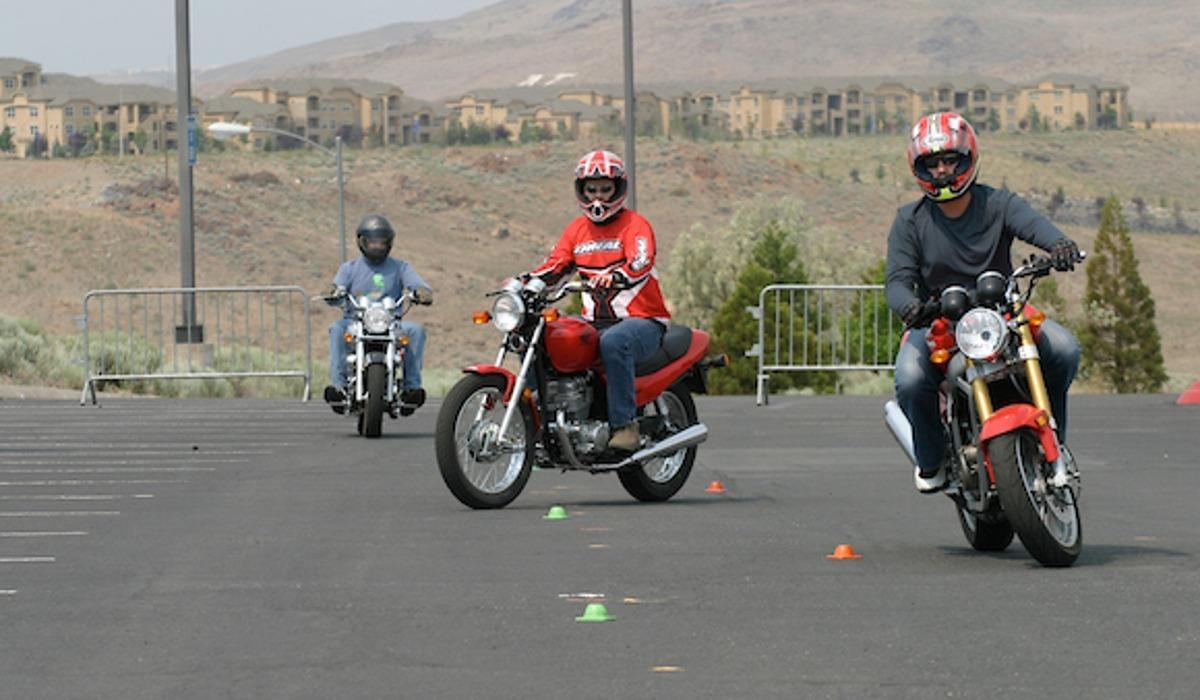
The feeling of freedom when riding a motorcycle on an open road is unmatched by clear blue skies, the sun at your back, and miles of land beneath your wheels that stretch on for as far as the eye can see. The breeze flows through your clothes with a refreshing swiftness that assures you that the Earth is still turning, with so much of it yet to explore.
A sense of tranquility washes over you because you are confident behind the handlebars, the expert training you have received active in your mind as you rumble along your journey. You took the Basic Motorcycle Rider's Course at TMCC, and now, cruising on the blacktop leads you to exciting new experiences.
Born to Ride
Often our lives pass us by without a second glance, but when you’re roaring on the freeway or down a dirt road on your favorite bike, nature’s colors sort of mix and become this vibrant scene, and you can’t help but notice. The satisfying independence sowed within every stitch of your jacket and your heart when cruising on the pavement comes at the simple cost of an engaging course that’ll teach you to ensure more of those moments come to pass.
There’s no better time to enroll in classes than this summer! It’s been an extended winter, and people are eager to get mounted on their motorbikes or the very least, receive their endorsement. Students will learn all sorts of defensive techniques, such as avenues of escape, pre-planning, vehicle inspection, and equipping themselves with the proper riding gear.
Rider coaches will instruct you on the fundamentals of bike safety alongside range training, an essential component of the overall curriculum to practice in secure environments such as parking lots. Firsthand proficiency indicates success and will be the scale that weighs passing or failing. Instructors want you to be as passionate about this course as they are!
Scott Alquist, Program Manager of the TMCC Safety Center, is an expert in teaching safety procedures to a vast collection of organizations in Nevada and internationally; however, he always enjoys meeting with students and instructors as often as he can, that is, when he’s not navigating roadways on his Harley.
“I like to meet each class. I tell students before they get into their classroom that if they pay attention to their instructor, they’ll get two things out of it. One: Learn how to have a good time! That’s why we ride motorcycles. Two: Understand how to make it home in one piece. That’s really what the course is about,” said Alquist.
An integral part of the course is studying how to apply a responsive approach versus a reactive one when you find yourself in sticky situations. Being responsive means thoughtfully and intentionally adapting your behavior to the current situation, whereas reactive hastily triggers a high-alert stress mode mentality. Like all good things worth having, time will perfect your methods for achieving success.
“It’s what they come away with, the ability to have fun, but also to help enhance their survival skills. The joke is, when I get out on my Harley, I look at everybody else on the road as hired ninja assassins whose only job is to kill me. I’ve gotten hit twice and did not like it either time,” said Alquist.
“Not to deter anyone from enjoying the ride, as it is a feeling you cannot duplicate. It is simply a matter of paying attention to what is happening around you and anticipating it. I would not trade all my years of riding motorcycles for anything else. Nothing compares to it–period. The places you see, the people you meet, you just cannot beat that!” continued Alquist.
Something they will teach you to comprehend early on: You are invisible. If someone in a four-wheeled vehicle comes up behind you and you see them in your rearview mirror, they get bigger. If a motorcyclist is trailing you, they seemingly get taller. You cannot trust blinkers or head movements, only the front tires. You never know who has taken their eyes off the road. Being prepared is what could save your life!
Much like our thriving campus community, the students registered in the Motorcycle Rider’s Course come from all walks of life and are encouraged to do so! Last year, over 512 individuals enrolled who were eager to learn how to ride, and Alquist and his team are pursuing a means to expand the number of people per class with sizable modified ranges. If their aspirations come to fruition, they could be looking at 600–650 diverse trainees in attendance.
“I have one student under 18 and had to have his parents notarize a waiver for him. You can take classes at 15 and a half. I’ll be 67 in July, and some are older than me. It spans all age groups, ethnicities, and careers. All of them are hoping to get their licenses and enjoy their freedom,” said Alquist.
“I’ve got nothing but good memories and interactions. I am fortunate enough to have loved my job, and I see the motorcycle community increasing. A lot of it comes down to education. The state does a pretty solid job putting up the Department of Transportation (DOT) reader signs. ‘Look twice, and save a life.’ ‘Don’t text and drive,’” continued Alquist.
Classes are offered throughout the summer months and are filling up quickly. For more information, please visit the Basic Motorcycle Rider’s Course website.






